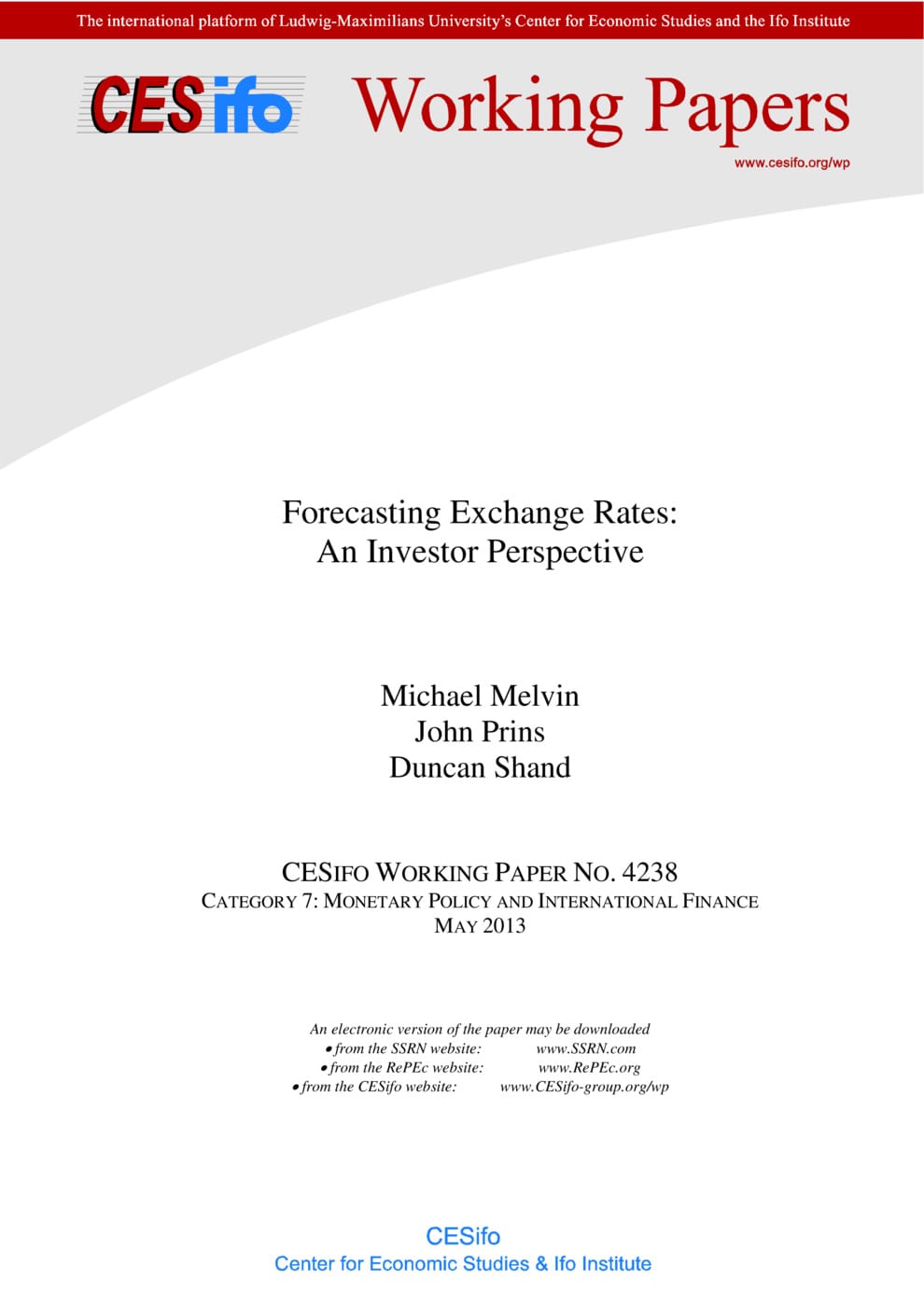Forecasting Exchange Rates: An Investor Perspective
CESifo, Munich, 2013
CESifo Working Paper No. 4238

The popular scholarly exercise of evaluating exchange rate forecasting models relative to a random walk was stimulated by the well-cited Meese and Rogoff (1983) paper. Practitioners who construct quantitative models for trading exchange rates approach forecasting from a different perspective. Rather than focus on forecast errors for bilateral exchange rates, as in the Meese-Rogoff case, we present what is required for constructing a successful trading model. To provide more perspective, a particular approach to quantitative modeling is presented that incorporates return forecasts, a risk model, and a transaction cost constraint in an optimization framework. Since beating a random walk is not a useful evaluation metric for currency investing, we discuss the use of benchmarks and conclude that performance evaluation in currencies is much more problematic than in equity markets due to the lack of a passive investment strategy and the multitude of alternative formulations of well-known currency style factors. We then provide analytical tools that can be useful in evaluating currency manager skill in terms of portfolio tilts and timing. Finally, we examine how conditioning information can be employed to enhance timing skill in trading generic styles like the carry trade. Such information can be valuable in reducing the duration and magnitude of portfolio drawdowns.
Monetary Policy and International Finance